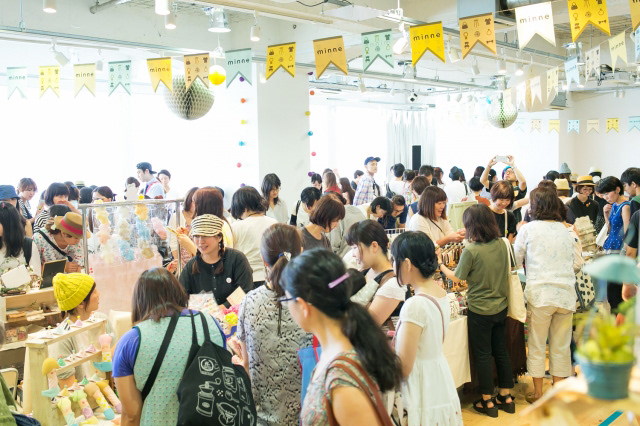Role:Project Manager, UX Designer, UX Researcher, Social-media Marketer, Blogger, Event Organizer
Sector:E-commerce
Term:Two and a half years
Tools:Sketch, Adobe Illustrator, Github, Cacoo
RESULT
・Launched Android App and it was chosen by the Best Android Apps on the Google Play Store for 2015
・Increased the number of the creator by 4 times and the number of sales 75,000 CAD
・Increased the number of Download app by 3 times
・It was chosen by Editor's Choice on App Store
・The team came together with many efforts
Problem
・Gradually team members were increased 3 to 15 people and we worked remotely
・There was no Persona, Customer journey map
・Users had to actively find products
SOLUTION
・Team building
・Defined Persona & Customer journey map
・Carried out User test
・Organized problems
・Ideation
・Prototyping
TEAM BUILDING
In the beginning, we had this product member around 10, however, we gradually grew to 30. Moreover, we were in different cities in Japan such as were in Tokyo, Fukuoka and Kyoto. I decided to adopt "scrum" and using "KANBAN" to communicate with team members easily. I connected with other branches by Google Hangout every day during office hours and created an environment conducive to conversation. Furthermore, we had stand-up meetings every morning and night, and also we had sprint retrospective once a week.

A party on my last day at this company was also remote!
PERSONA & CUSTOMER JOURNEY MAP
I had reviewed users on Google Analytics to define Persona both purchaser and creator and talked users who are similar to Persona.
Fortunately, many my coworkers who belonged to different teams were our users; therefore, I had a lot of user interviews with them and make a Customer journey map with team members.
Translated to English
Original one
USER TEST
I carried out user tests and watched the video and wrote out their gain and pain points for comparing the Customer journey map that we made with every team member.
ORGANIZED PROBLEMS
After getting user test results, I classified the customers' problems and our realizations with Metrics.
Moreover, I categorized these problems into 5 labels such as...
- Acquisition (Increase the number of downloads)
- Activation (Increase the number of registered users)
- continuity (User uses this app again)
- Revenue (Increase purchases)
- Introduction (Increase new users)
One of the biggest problems was "The users can't encounter nice items", so I focused on it with Fishbone Diagrams, our original problem-solving format( visualization of facts, problems, hypotheses, solutions and convenience for users ).
IDEATION
Using Crazy8 with team members and voted for a good idea with a sticker. Then we decided to consider a feature that allows users to passively meet wonderful works.
COMPETITIVE ANALYSIS
PROTOTYPING
Paper Prototype and Prototype on Illustrator or Sketch.
MORE WORKS
Design Sprint with Google
We collaborated with Google and took in Design Sprint that made by Google for Android application. It was very helpful to learn Material Design and what Google wants in a limited time. This is why this app was chosen by the Best Android Apps on the Google Play Store for 2015.
"The Design Sprint is a proven methodology for solving problems through designing, prototyping, and testing ideas with users. Design Sprints quickly align teams under a shared vision with clearly defined goals and deliverables. Ultimately, it is a tool for developing a hypothesis, prototyping an idea, and testing it rapidly with as little investment as possible in as real an environment as possible."
quoted from Design sprint kit
quoted from Design sprint kit
Social media marketing mainly on Twitter
Direction for Web pages
Event Organizer

Blogging